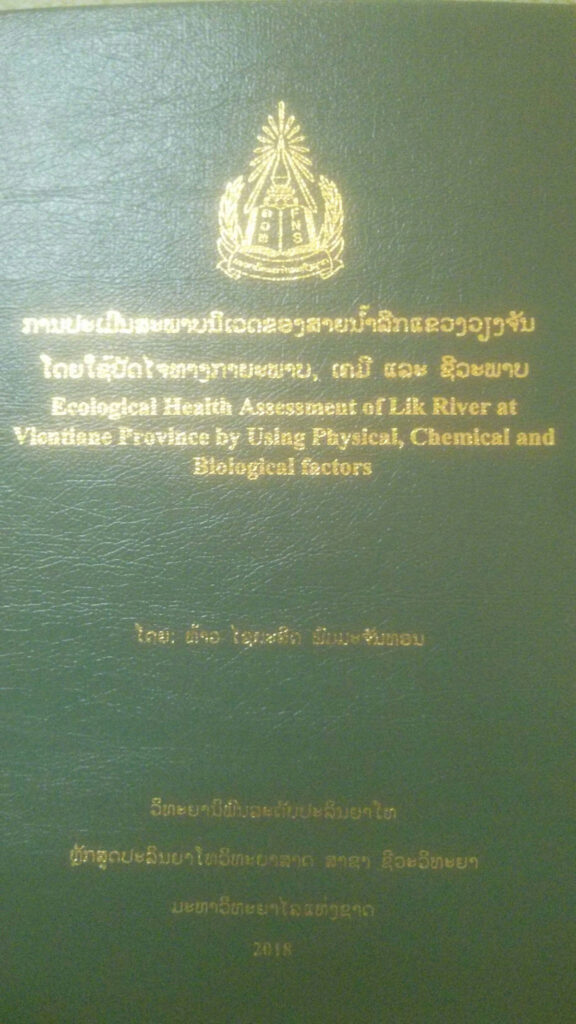The study on ecological health by using the physical, chemical and biological factors aims to indicate the effect of activities to ecological health of Lik River, Vientiane province. The survey and data collection were conducted twice in January and May, 2018. Total seven sampling sites were divided to three parts. The part one is upstream area, belonging to the
Kasi district that consist of 3 sampling sites included a reference site. Two sampling sites was take place in the second part, located in Fueng district and two last sampling sites was take place in the downstream areas that located in Hinheup and Keooudom districts. The results of water quality, e.g. Water temperature, Velocity, Electro conductivity, Turbidity, pH, TDS, PO4, NO3-N, DO and BOD5 were significantly different between sites and sampling times (p<0.05). All results of physical-chemical parameters for most of sampling sites were
classified as a standard type 2 of surface water, except for NL4 that found DO value lower
than standard, while the BOD was higher than national water quality standard for twice
sample. There fore, the water quality of this site in dry season may consideras a standard type 3 of surface water. The biological factor was using Macroinvertebrets. Among total of 56,910 individuals belonging to 20 Orders, 96 Families and 213 genera were recorded. The most diverse was Order of Ephemeroptera with among 42 genera or approximately 19.72% of total. The value of genera diversity index (H’) and evenness index (J’) for most of sites were shown decreasing in May compare to January samples, only one site (NL2) was shown increasing in May samples for both indexes genera diversity and evenness. Alternatively water quality used BMWP Thai Score with ASPT. An average ASPT score = 6.51. The relationship between all physical-chemical parameters and genera diversity index, only DO and BOD were strongly relationship and statistically significant (r = 0.65, p = 0.012 and r = 0.57, p = 0.031), respectively. In conclusion, all factors were important significant indicators as a clear evidences to certify the Lik River ecological health. Those condition were remaining and supporting for livelihood of aquatic organism.
Agroforestry and Ecosystem Management
Types:
Thesis
published in 2018, Lao language




